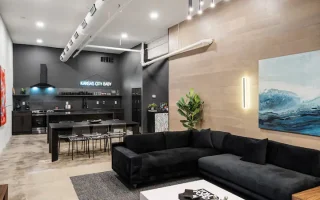marwaarsanios.info – The landscape of design has undergone a profound transformation over the centuries, evolving from traditional methods to the digital realm. This evolution has not only changed the tools and techniques used by designers but has also reshaped the way designs are conceptualized, created, and disseminated. This article explores the journey from traditional design practices to the advent of digital design, highlighting the key milestones and the impact on the creative industry.
The Roots of Traditional Design
Traditional design has its roots in ancient civilizations, where art and design were integral to cultural expression. From the intricate patterns of Islamic art to the ornate designs of the Renaissance, traditional design was a labor-intensive process that required a high level of skill and craftsmanship. Tools such as brushes, chisels, and pens were the instruments of choice, and materials like paper, stone, and canvas were the mediums on which designs were brought to life.
The Advent of Industrial Design
The Industrial Revolution marked a significant shift in design, introducing mass production and standardization. This era saw the rise of industrial design, where functionality and efficiency became key considerations. Designers began to work closely with engineers and manufacturers to create products that were not only aesthetically pleasing but also practical and cost-effective to produce.
The Digital Revolution
The late 20th century witnessed the dawn of the digital age, which revolutionized design once again. The introduction of computers and software applications transformed the design process, making it faster, more flexible, and accessible to a wider audience. Digital tools like Adobe Photoshop, Illustrator, and 3D modeling software democratized design, allowing for experimentation and iteration at a scale previously unimaginable.
The Impact of Digital Design
Digital design has had a profound impact on the creative industry. It has accelerated the design process, reduced costs, and enabled real-time collaboration across the globe. The ability to simulate and prototype designs digitally has led to more innovative and efficient solutions in various fields, from architecture to product design. Moreover, the digital realm has opened up new avenues for design dissemination, with platforms like the internet and social media allowing designs to reach a global audience instantly.
The Future of Design
As technology continues to advance, the future of design holds even more promise. Augmented reality (AR) and virtual reality (VR) are poised to transform the way designs are visualized and experienced. Artificial intelligence (AI) and machine learning are assisting designers in generating ideas and optimizing designs. The evolution of design from traditional to digital is an ongoing journey, with each new technological breakthrough offering new possibilities for creativity and innovation.
Conclusion
The evolution of design from traditional to digital has been a journey of innovation and adaptation. While traditional design will always hold a special place in the history of art and design, the digital revolution has opened up new horizons for creativity and efficiency. As we look to the future, the synergy between traditional craftsmanship and digital technology will continue to shape the landscape of design, pushing the boundaries of what is possible.


